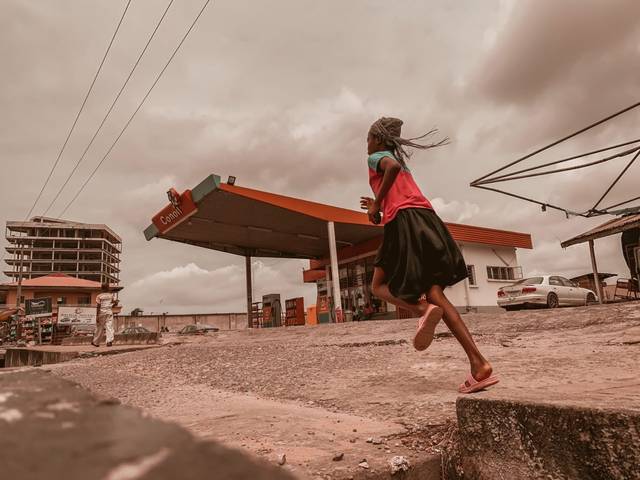
Alumni on the Move
Little acts of revolution: how we rewrite our cities every day
I have many questions, very few answers and one proposal regarding the cities on our continent. Current dialogues on the subjects of decolonisation and social justice on the African continent tell us that not everyone experiences or gets to live, work and play in our cities. Thinking about navigating the city as reading and writing the city can be helpful when thinking about spatial justice, and the question of how we create a just city.
Reading
In 1997, my family arrived in Congo (DRC) after living in Japan for 5 years. Remembering that childhood is like a dream. Our first house in Congo was a mansion of sorts. Like all the European houses in the neighbourhood, it stood out of place, like an item which had accidentally been left behind by its owner. In fact, the whole town of Likasi felt like a hand-me-down. Nothing quite fit.
I loved the mango trees that flourished in my neighbourhood. They were the only things which weren’t awkward about Likasi. When there were no lizards in sight, you would find me in the tree branches pretending I was on a space ship. I spent most of my days alone in our large compound. My brother and sister were too young to play with me and the adults were too busy to take me to my friends’ house. When I got bored, I would peep through our gates at the large roads which stood like unswept corridors. I would think indignantly that I was six years old and completely capable of crossing the road by myself to visit my friends. And one day I did.
I recall a moment of self-doubt when I came face-to-face with the imposing main road. I remember going for it and crossing anyway, underestimating the timing and the width. The hooting of a car as it swerved to avoid me humbled me and I swore never to say a word about it to my mother. But Likasi was a small city, and it wasn’t long until my mother arrived home from work one day, fuming and berating me about how she had been told about the incident by Maman such-such who had witnessed it.
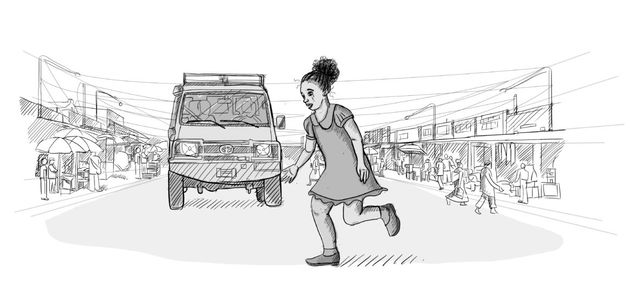
Today I have the language to reflect on my childhood experience of the city. As a city planning postgraduate and social justice educator, I spend a lot of my time pondering why, in all the places that I’ve lived, I remember most how those places made me feel rather than how they objectively looked. Anyone who has navigated a city has experienced places which have left them feeling comfortable, happy or safe, and also places which have left them feeling guarded, troubled or insecure. Navigating and experiencing a city is synonymous with reading the city with our bodies like we would a map with our eyes. As a child, I read Likasi with fear and isolation. When the cries of women rose into the dusk, no one had to tell me that the roads had swept another child away. I also read the comfort and safety that nature around me provided in my loneliness. As an adult concerned with social justice, I know that not everyone has the luxury of finding safe places.
In unequal cities, particularly in sub-Saharan Africa, how we read the city is largely influenced by class and race. The continent’s socio-political history has had a major influence on the urban fabric of many of our cities through the enactment of various urban planning laws. Extensive literature exists on the colonial and apartheid city, whose main strategy was to legally segregate people based on race and ethnicity. The present-day challenge is how to redress this so that everyone feels included in our cities which have been socially and physically designed for exclusion. As African governments focus on remaining globally competitive (usually with the promise of utopian megacities in the future) and meeting competing priorities such as jobs and ailing infrastructure, spatial justice and the need to reshape and integrate our cities have been overshadowed. Many of our cities have received a new coat of paint but the structure remains the same: unjust and unsustainable. So how do we begin to create a spatially just city in which all citizens can read and experience the city more positively?
In the 1960s, uprisings and social mobilisations against exclusionary urban renewal projects and inadequate public services placed social justice on the agenda in the social science and urban planning fields. Urban studies became a means to address inequalities and social exclusion. The urban justice idea of having a ‘right to the city’ was popularised by Henry Lefebvre in 1968, and it remains relevant today. Having ‘right to the city’ is a demand for the right to information, the right to use multiple services, the right of users to make known their ideas on the space and time of activities in the urban areas and the right to the use of the centre.
I have lived in Cape Town for 6 years. I cannot say that the stark inequality does not shock me anymore, because the city is anything but normal. From the poverty you witness as soon as you land to invasive gentrification occurring in struggling communities nearer to the centre, my studies aim to tie together the issues of justice and urban planning. In her book The Just City, planning author Susan Fainstein offers three ideas for spatial justice: equity, democracy and diversity.
When I witness the mass exodus of people leaving the Cape Town central area for the periphery after work each day, I question who actually belongs in the city. How do we justify our even more dysfunctional transportation system, in which public trains are barely able to hold all their passengers while the private vehicles on our congested roads are so blatantly empty? Equity is a hallmark for spatial justice. It necessitates the even distribution of both material and non-material benefits over space, without favouring those who are already at an advantage. This is why the conversation around the redistribution of land, especially urban land in South Africa, is fundamental in the advancement of more just cities.
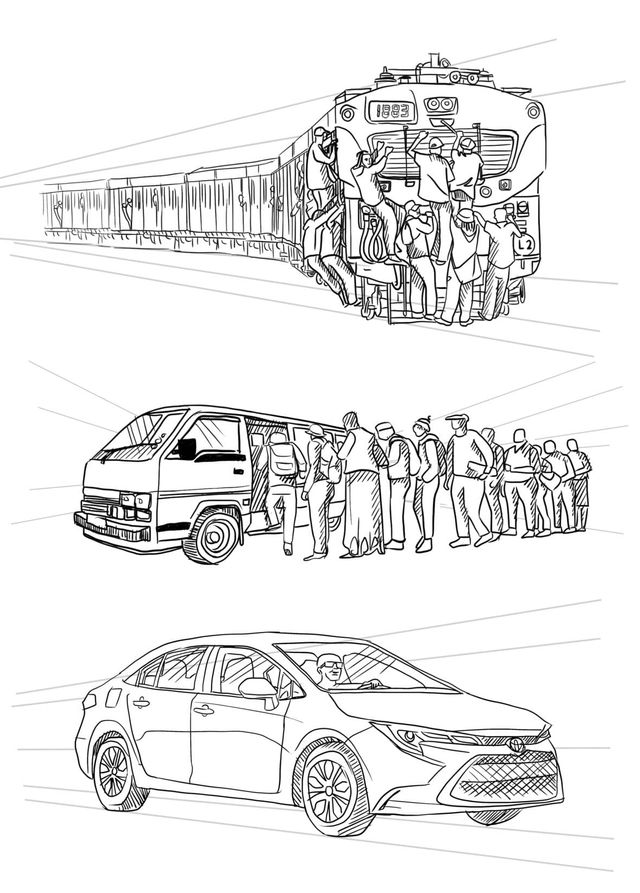
The value of diversity speaks to recognition, openness to others and tolerance in terms of our physical environment and social relations. Diversity tells us to go beyond encouraging acceptance of others and take into consideration the social composition of places in an increasingly globalised world. Who do you see in your places of work or of leisure? Who do you not see? The call for diversity is a call for the reproduction of and respect for group differences without oppression. In South Africa, walking into a place and reading the absence of certain bodies in terms of race and gender is almost automatic. We are often so hyperaware of only these two identities that we’ve forgotten that we are an intersection of so many other identities as individuals. Is there really diversity in the civic space? Where are our close-to three million citizens with disabilities or the 80 000 wheelchair users? Are our cities compassionate towards those who live with mental disabilities and their loved ones who worry over their safety?
When I visited the Bo-Kaap, a central Cape Town neighbourhood which is profoundly rich in history and also well-known for being Instagram-worthy, I recall feeling disappointed by its busyness. I spent the first 10 minutes trying not to get run over by vehicles which filled the main road and spilled into the narrow, cobblestone streets. I experienced the area as feeling invaded before I read about its struggles with gentrification. Shortly after I arrived, the mosques in the area sounded for prayer and I saw many members of the community heading towards them. As I made my way further up into the Bo-Kaap, the colours of the houses dulled and peeled, the streets emptied and the single park lay rusting away. I experienced calm, peace and sadness. As the chanting of prayers was raised to the sky, I observed the bustling city centre below and I whispered a prayer: for a hero who would be entrusted with bringing justice to our cities.
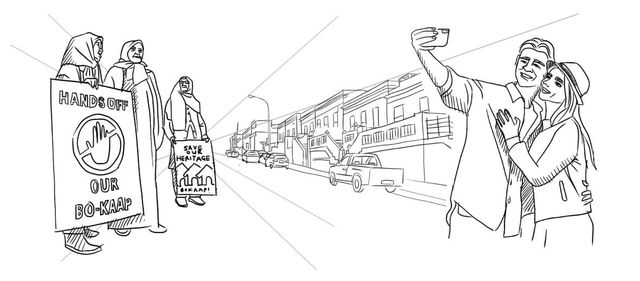
Writing
While we may be reading the city every day, we are also cartographers who write the very same city. Being an African in a public space in Asia means that I read a space in a certain way, but I am also writing the very same space through my presence in it. It is not every day that we think about our presence in certain spaces as being little acts of revolution. Yet, this is not new for the many who continue to show up in spaces which are violent to them because they have embodied the responsibility of writing those very same spaces.
In India and Brazil, struggles for and around urban space and infrastructure have seen the rise of social movements addressing worsening poverty and social exclusion in terms of ‘citizenship’. Thinking about cities through citizenship broadly challenges who gets to write our cities, and suggests it cannot just be the rich, powerful and influential who get to do so. By simply living and being in the city, you are a citizen of the city who is participating in actively producing and writing the urban space of a space. It is not a saviour who is entrusted with bringing justice to our cities. It is you, the citizen.
As citizens, it is our collective responsibility to action the values of spatial justice (equity, democracy, diversity) and interrogate whether we all have access and freedom to write the city. The call for statues and names to fall becomes about more than just a statue or particular figures. It becomes a call to question whose stories have been erased or have not been written in the urban spaces of our cities. In Cape Town for example, how are we continuing to erase the stories that citizens in our society are trying to write: by silencing mosques, by blocking affordable housing projects in the city centre, by emphasising motorised mobility on our roads? When we allow citizens to write the city, we allow everyone to equally and safely appropriate urban space. We allow citizens the right to live, play and work in urban spaces as well as their right to represent and characterise the city. Where we live, how we live or how we move around is our contribution to the tapestry of stories of our cities. Your story may be one of comfort, of dignity, or hardship, of informality, of fear, of security, of resilience. Regardless of your context, you have rights to write the city.
When I think about my close encounter with oncoming traffic as a child or I remember the young boy close to my school who was run over by a truck in Congo, I am reminded that in matters of justice the stakes are high. Our complacency and ignorance cost lives. We cannot accept cities in which only a few get to rest in safe homes while others struggle to have dignified shelters. The stories of our cities demand a new literacy in which we can all partake. I am not advocating for every urban space to be uniform as an approach to accommodate everyone. Part of the beauty of cities is their diversity of character. Nevertheless, can we make our streets safer for children? Can we co-exist with nature? Can we make urban spaces sympathetic to parents with strollers, wheelchair uses, the elderly and the many who are physically and mentally living with disabilities? Can we redress the past by ensuring urban land is redistributed equitably? Can we ensure that our public spaces commemorate the stories of our history in its diversity? We need to recognise that spatial justice is about more than just formal rights, it is about substantive rights: the right to life, liberty, dignity and happiness. What I want to propose is a radical humanisation of our cities in which our urban spaces are compassionate, if not forgiving. Writing the just city begins by asking many questions and having few answers but writing it anyway.
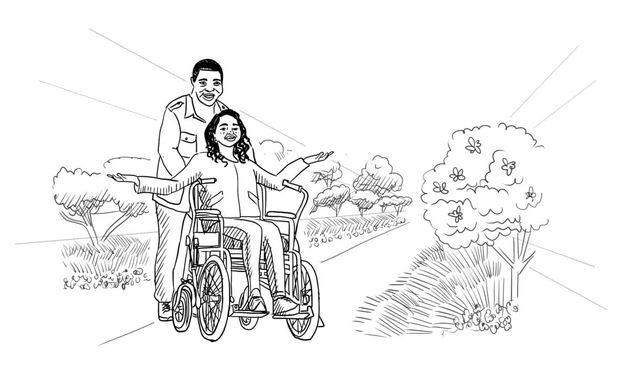
The illustrations were done by Orli Setton (South Africa & UCT GSB, 2014).







